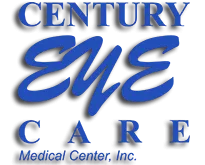
Laser-assisted in-situ keratomileusis, or LASIK, is the most common type of refractive surgery. If the curvature of your cornea deviates from the ideal curvature, light entering your eye will bend (refract) incorrectly. This is known as a refractive error and can cause vision problems. For many patients, LASIK safely and successfully corrects the shape of the cornea, often allowing them to dispense with eyeglasses.
Vision Problems That LASIK Improves
There are several types of refractive errors. Myopia, or nearsightedness, typically occurs as the result of having a cornea that curves too sharply. Hyperopia, or farsightedness, often means that the curvature of your cornea is too flat. Unevenly curved corneas lead to astigmatism, which affects both your near and far vision. LASIK can address all these conditions.
About the LASIK Procedure
Before starting the LASIK procedure, your ophthalmologist uses wavefront imaging technology to create a digital image, or map, of your eye’s refractive errors. He or she uses this information to calibrate the excimer laser used to reshape the curvature of the cornea.
The LASIK procedure itself is performed on an outpatient basis and takes about 30 minutes. Your doctor may prescribe anti-anxiety medicine before the surgery starts. You’ll recline in a chair. The ophthalmologist uses eye drops to numb your eyes. Once numb, an instrument holds your eyelids open.
The eye surgeon uses a surgical blade (microkeratome) or, in bladeless LASIK, a femtosecond laser to create a small hinged flap in the front of your eye. This allows him or her to access the underlying corneal tissue. The ophthalmologist then uses the calibrated excimer laser to remove tiny particles of corneal tissue, thereby re-contouring the curvature of the cornea, which corrects the refractive error. Once the surgeon is satisfied with the newly shaped cornea, he or she puts the corneal flap back in its original place, where it will heal, without the need for stitches.
Patients treating both eyes with LASIK can usually have them done during the same appointment. You may have itchy, watery eyes and need pain medication immediately after surgery. You will likely notice a dramatic improvement in your vision within 24 to 48 hours after surgery and can usually resume your normal activities at that point. Over the next couple of months, your eyes will heal completely and your vision will stabilize. You will need to return to the office for follow-up appointments with your eye doctor.
Risks
Some people are better candidates for LASIK than others. For example, individuals with extreme refractive errors, severe dry eye or corneas that are too thin to withstand corneal flap creation may not be suitable candidates for LASIK. If you have heard that you are not an appropriate LASIK candidate, don’t worry. There are several alternative vision correction procedures that can help you reduce or eliminate your daily dependence on prescription lenses.
All surgeries carry risks. The risks associated with LASIK include:
- Dry eyes. Following LASIK, patients may experience dry eyes; although this is usually temporary.
- Undercorrection. If too little corneal tissue is removed, the visual outcome may not be ideal.
- Overcorrection. Likewise, if too much corneal tissue is removed, the visual results may not be ideal. Overcorrection is more difficult to correct than undercorrection.
- Regression. Sometimes, patients’ vision slowly returns to how it was before surgery.
- Halos. For some, undergoing LASIK affects their night vision, causing glare and halos around lights.
- Astigmatism. Uneven removal of corneal tissue may cause astigmatism.
- Flap Issues. Rarely, problems with the corneal flap occur, potentially causing infection or inflammation in the eye. One way to reduce this surgical risk is to choose bladeless, or all-laser, LASIK. Using a laser instead of a microkeratome for corneal flap creation eliminates all risks associated with manual corneal flap creation.
If you’re considering LASIK, call us today so we can help determine if it’s right for you.
